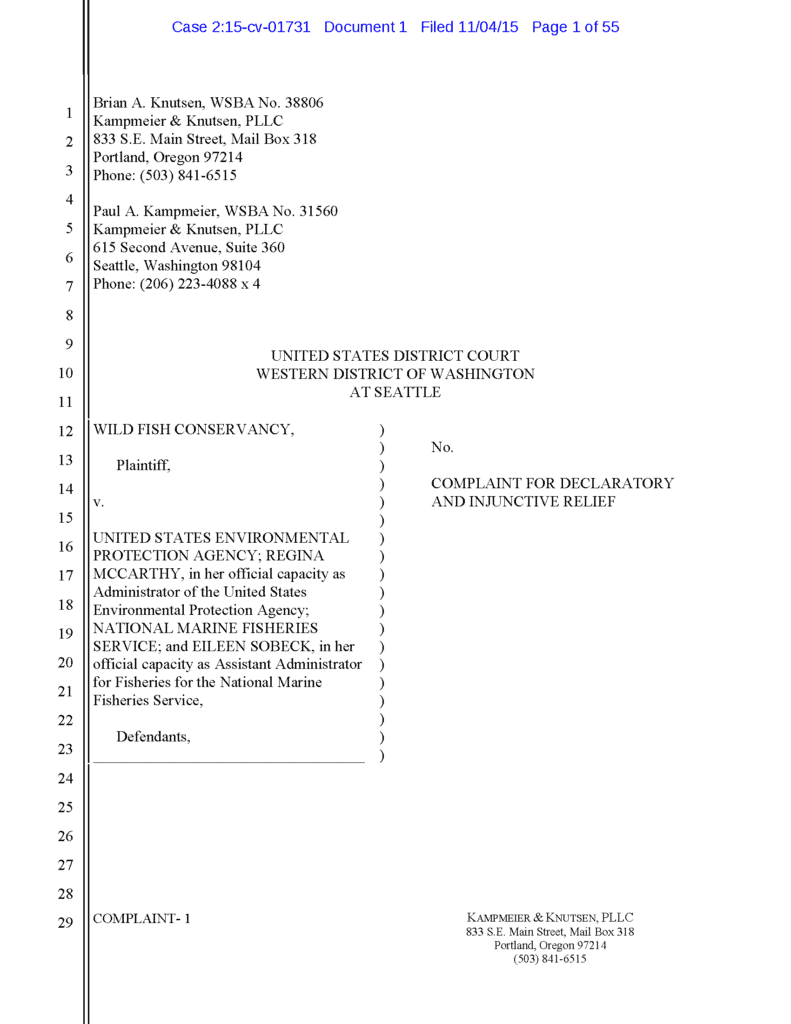Complaint for declaratory and injunctive relief filed by Wild Fish Conservancy on November 4, 2015 against NOAA Fisheries and the Environmental Protection Agency in Seattle federal Court.
From the introduction:
“Commercial salmon farms pose myriad risks to wild salmonids, many of which are well-studied and documented. Despite known risks and harms, the National Marine Fisheries Service (“NMFS”) and the United States Environmental Protection Agency (“EPA”)determined in 2008 that commercial salmon farms in Puget Sound are not likely to have any adverse effect on threatened wild salmonids. The agencies thus declined to fully evaluate and minimize the harmful effects from these operations though a formal consultation under the Endangered Species Act (“ESA”). This Court found that the 2008 determination did not meet ESA standards and ordered NMFS and EPA to reconsider their findings. Remarkably, the agencies concluded again in 2011 that the Puget Sound commercial salmon farms are not likely to have any adverse effect on threatened salmonids and that formal consultation under the ESA is unnecessary.
The next year there was an outbreak of the infectious hematopoietic necrosis virus (“IHNV”) at commercial salmon farms near Rich Passage at the southern end of Bainbridge Island in Puget Sound. Such outbreaks artificially amplify the number of viral particles that would otherwise occur due to the number and density of fish contained at the farms. The outbreak occurred at a time when wild juvenile salmonids were migrating through the nearshore environment near the commercial salmon farms and therefore likely had significant adverse effects on the wild fish. Nonetheless, NMFS and EPA have not revisited their 2011 determination to consider whether the Puget Sound commercial salmon farms may adversely affect threatened salmonids such that formal consultation under the ESA is required.
Plaintiff Wild Fish Conservancy now challenges NMFS’ 2011 determination that Puget Sound commercial salmon farms are not likely to have any adverse effect on threatened salmonids and NMFS’ and EPA’s failure to reconsider that determination in light of the 2012 IHNV outbreak. Formal consultation under the ESA is necessary to fully evaluate the risks and harm from these facilities and to minimize and monitor adverse effects.”
